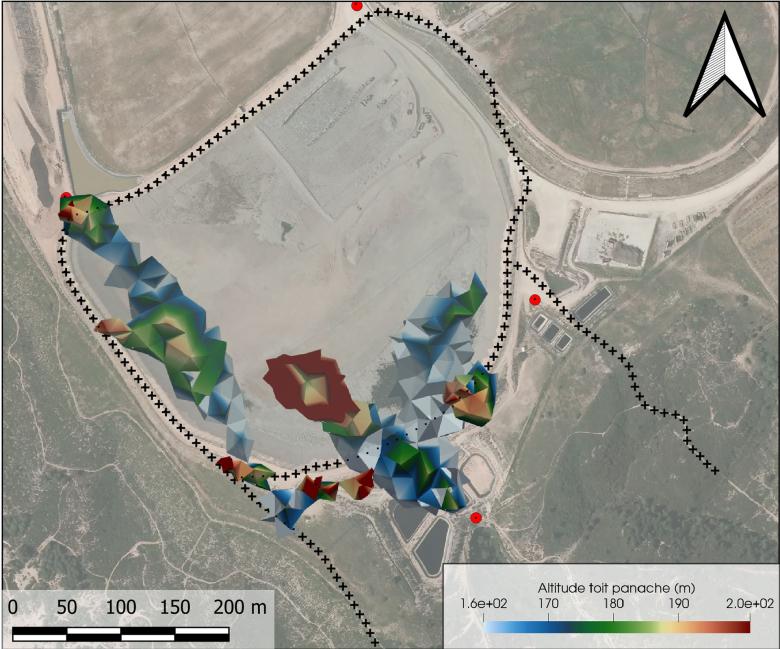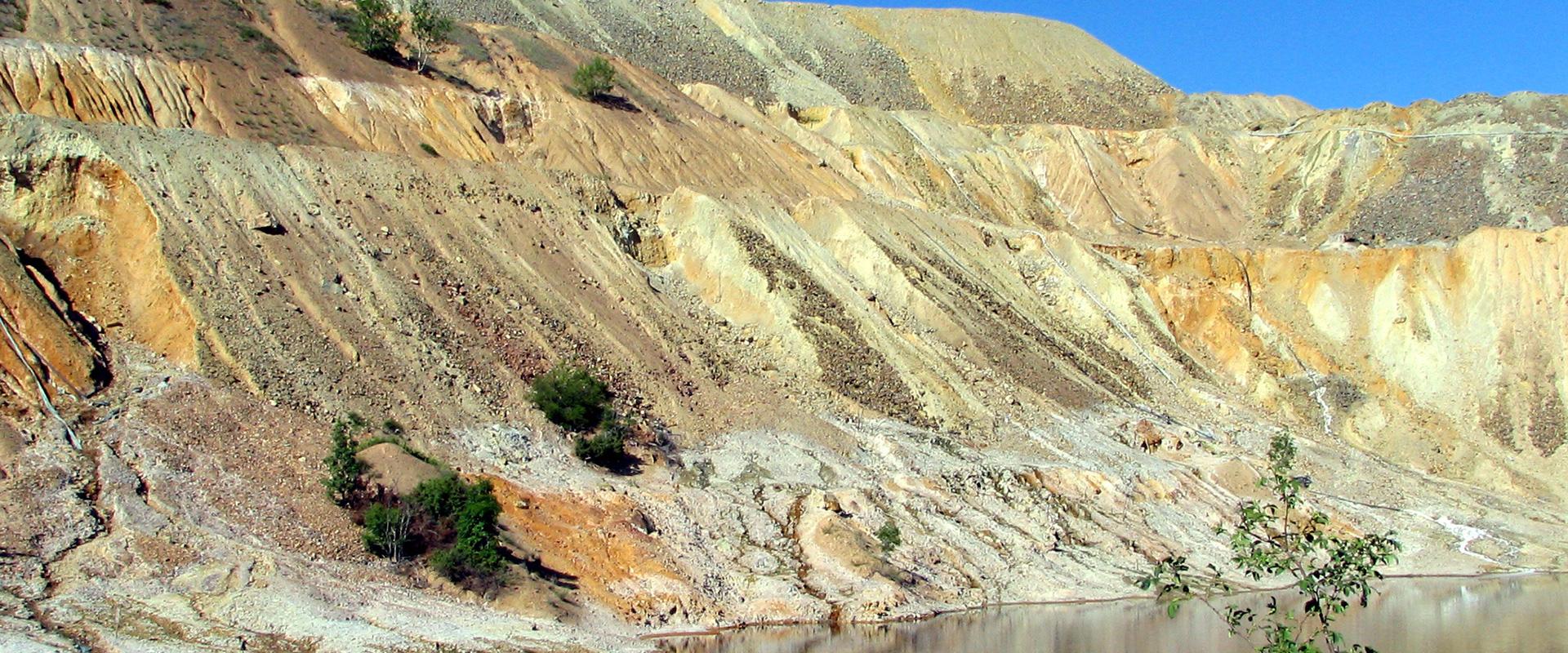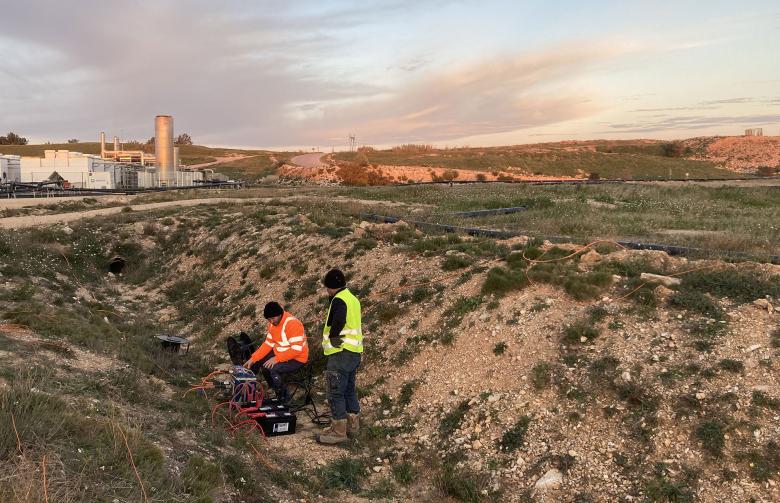
Map of the elevation of ceilings of detected plumes, extracted from 3D-inversion of electrical resistivity measurements.
© BRGM
The need
A network of piezometers around the cells is used to monitor groundwater around the ISDnDs. However, the information thus acquired remains intermittent and there is no continuity of measurements or monitoring between two piezometers (symbolised by red dots in the illustration). The spread of any pollution in the event of a leak is therefore usually only detected once the aquifer has been reached and contaminated.
The electrical resistivity of the subsurface, which is sensitive to the circulation of mineral-bearing underground flows, is a discriminating geophysical parameter that can also be used to detect spills of contaminated, leachate-conducting water in and around landfill sites. However, it is difficult to measure resistivity by electrical methods in landfill sites because of the presence of surface facilities and because it is impossible to access the cells, because of the geotextiles, composed of electrically insulating material, which underlie them. One solution is to fit the liners with a mesh of electrodes connected to the upper surface of the geotextile. This is a costly solution which is rarely used, especially as it is impossible to repair buried equipment in the event of technical failure (broken connections, rusting of electrodes, etc.).
The results
In order to reconstruct the 3D distribution of resistivities around and beneath the cells, BRGM has developed an innovative geophysical method based on unconventional configurations of electrodes positioned on the ground surface and around the cells. An algorithm is used to optimise the optimum configuration of the measurement quadrupoles according to the possible positions of the electrodes around the cells. The second stage of the methodology consists in reconstructing the 3D distribution of resistivity using a mathematical inversion process for the study area, which can also be used to visualize the variations in resistivity under the cells.
The method was tested on an ISDnD site in the Sud Provence-Alpes-Côte d'Azur region, where a conductive flow was detected downstream of a cell at an outlet. In all, around 600,000 measurements were recorded over three days, from a set of almost 200 electrodes installed around the test site, upstream and downstream of a landfill cell. After optimising the input data, the 3D resistivity model revealed the existence of several conductive plumes below and downstream of one of the cells, one of which leads to the leachate-water outlet.
Using the results
Using this method, ISDnD managers can now monitor or check sites, and pinpoint any defects in materials or implementation, and then remedy them. The methodology developed can be used both to detect an abnormal flow or effusion, and to ensure continuous monitoring at regular preventive-inspection intervals.
The partners
- Métropole d’Aix Marseille Provence






